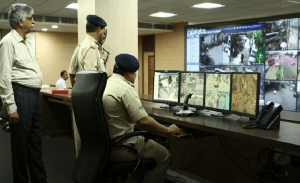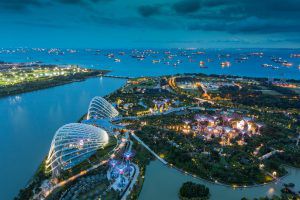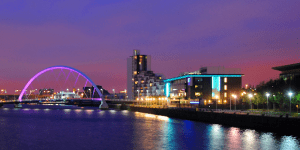
Digital Transformation in Cities
The World Bank indicates that for the first time ever, the majority of the world’s population live in a city, and this proportion continues to grow. One hundred years ago, 2 out of every 10 people lived in an urban area. By 2050 it’s projected that 7 out of 10 people will live in a city. In addition to being vital for our future, cities are the hubs of action—business, trade, technology, innovation, but what does this migration of people to cities mean for citizen government services, traffic congestion, emergency response, health services, and energy consumption?
At the sixth annual Smart City Expo World Congress in Barcelona (which is the next stop on our Empowerment Tour) we’ll discuss such topics. With 14,000 delegates representing over 440 cities worldwide, Smart City Expo World Congress is the world-leading smart city event. Our answer to several of the challenges facing cities today is through our Microsoft CityNext initiative, which aims to empower more sustainable, prosperous, and economically competitive cities.
The innovation required to meet this goal will come during this fourth industrial revolution – we’ll witness how artificial intelligence, machine learning, robotics and biotech advances delivered through cloud solutions can change our lives and shape the lives of future generations. But we will also take the responsibility to understand that the benefits of these advanced technologies remain elusive for many citizens in the world and that the “digital divide” is rapidly spreading. Today, 60% of the world’s citizens are excluded from the benefits of a digital economy. There is an incredible opportunity for all of us to do more.
Given our mission to empower every person and every organization on the planet to achieve more, we are committed to helping citizens and governments the world over make cities inclusive, safe, resilient and sustainable, as outlined in the United Nations Sustainable Development Goal #11.
 Consider these examples:
Consider these examples:
The city of Surat has experienced rapid population growth, leading to a shortage of staffing in its police force. To provide a safer community for its citizens, the Surat City Police Department started the “Safe City Project,” an initiative striving to reduce the city’s crime rate using modern technology. The department created a datacenter to monitor street activities by tapping into state and national surveillance grids. Crime rate has lowered by 27% in surveillance zones.
Some of the city’s other technology successes include:
- Implementing an e-application solution to improve the tracking of citizen requests
- Automating water treatment plant management to optimize water usage
- Creating a vehicle tracking system for door-to-door garbage collection
- Adding continuously updated arrival time displays at all city bus stops
- Introducing computer software training in all schools
- Generating 36 percent of the city’s energy from renewable sources
 Singapore is running a large “Smart Nation” project aimed at Digital Transformation across the areas of Health, Living, Mobility, and Services; in a country that already has a strong digital footprint. Like many Governments, although most services are already digital, there are silos and barriers to inclusion for everyone (barriers such as digital literacy and access). While Singapore continues to work on education and access, they are also partnering with Microsoft on how a new “Conversation as a Platform” approach might break down even more barriers to service access. Our shared vision is to move to a day where any individual can access any service using their native language, from their phone, in as natural a way as visiting a service center. Using machine learning and data analytics, the vision includes building advanced chatbots to also answer more complex queries and requests without any manual intervention.
Singapore is running a large “Smart Nation” project aimed at Digital Transformation across the areas of Health, Living, Mobility, and Services; in a country that already has a strong digital footprint. Like many Governments, although most services are already digital, there are silos and barriers to inclusion for everyone (barriers such as digital literacy and access). While Singapore continues to work on education and access, they are also partnering with Microsoft on how a new “Conversation as a Platform” approach might break down even more barriers to service access. Our shared vision is to move to a day where any individual can access any service using their native language, from their phone, in as natural a way as visiting a service center. Using machine learning and data analytics, the vision includes building advanced chatbots to also answer more complex queries and requests without any manual intervention.
 Glasgow, Scotland transformed itself into a smart city of the future by building an open big-data platform on Microsoft Azure. This platform enables citizens to crowdsource traffic information and find real-time updates on everything from the current population of rats in the city to the availability of open bicycle racks. Further, using Power BI, the city is better able to analyze where resources should be allocated and businesses can better spot opportunities for growth.
Glasgow, Scotland transformed itself into a smart city of the future by building an open big-data platform on Microsoft Azure. This platform enables citizens to crowdsource traffic information and find real-time updates on everything from the current population of rats in the city to the availability of open bicycle racks. Further, using Power BI, the city is better able to analyze where resources should be allocated and businesses can better spot opportunities for growth.
Microsoft partners help cities provide the end-to-end software, devices and services capabilities that meet a range of needs from consumer-related demands of citizens to the mission-critical, enterprise demands of city operations.
At Smart City Expo, Microsoft will bring delegations of customers from around the world and over 50 partners will demonstrate innovative solutions to help cities digitally transform, enabling them to:
- Engage with citizens through mobile services to better connect governments, businesses, and people.
- Empower city employees to better collaborate across departments and increase productivity and efficiency.
- Optimize city operations and infrastructure by connecting systems, data, and people across departments to make information more accessible and services more affordable.
- Transform by harnessing the cloud and data explosion for actionable analysis and deep insights to innovate and design new digital services that benefit society, provide transparency, and encourage citizen participation.
I look forward to meeting you at the 2016 Smart City Expo World Congress.
Toni Townes-Whitley
#MSFTempowers




